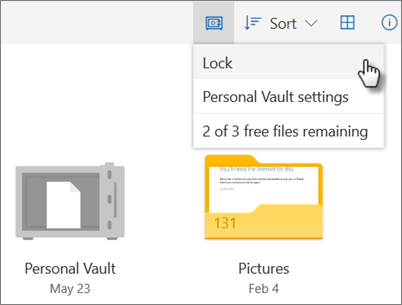

None of us liked that policy to begin with, and then some high-profile false positives helped force the policy to be revised. The one drive vault is a vhdx file hidden on your computer and bitlocker encrypted with a key stored by Microsoft on their side of things. The scanning policy used to be more aggressive and didn't exclude content that was unshared or only shared to a small set of people. As someone personally screwed over by personal vault, I highly recommend not using it. (There's a user-visible message on the web UI.) It's not deleted, and it continues to be fully accessible to the owner across all machines. As someone personally screwed over by personal vault, I highly recommend not using it. In those cases, the folder is marked as porn and simply can't be shared again. (A parent's "baby in bathtub" type of photos are not the target here.) In most cases, it's adult pornography or family photos. Clear cases of shared child exploitation porn are reported. Open OneDrive live and click on the My Files option under Office Tutorial. It's some highly controlled clean-room environment where a dedicated team tries to determine whether the content is a legal risk or not. If the broad sharing criteria is met and automated flesh tone detection triggers a positive result, that is the only case in which an item is anonymously sent to manual review. The goal is to make flesh tone detection only run during broad sharing.ģ. (This is a change in policy it used to run on upload.) There are heuristics that try to measure whether it's personal sharing or broad sharing, and we're continually improving those. Automated flesh tone detection only runs when a photo is shared. It's only used to identify known child pornography that has already been reported, to make sure it can't be re-uploaded.Ģ. There are 3 processes: PhotoDNA hashing, automated flesh tone detection, and manual review.ġ.


 0 kommentar(er)
0 kommentar(er)
